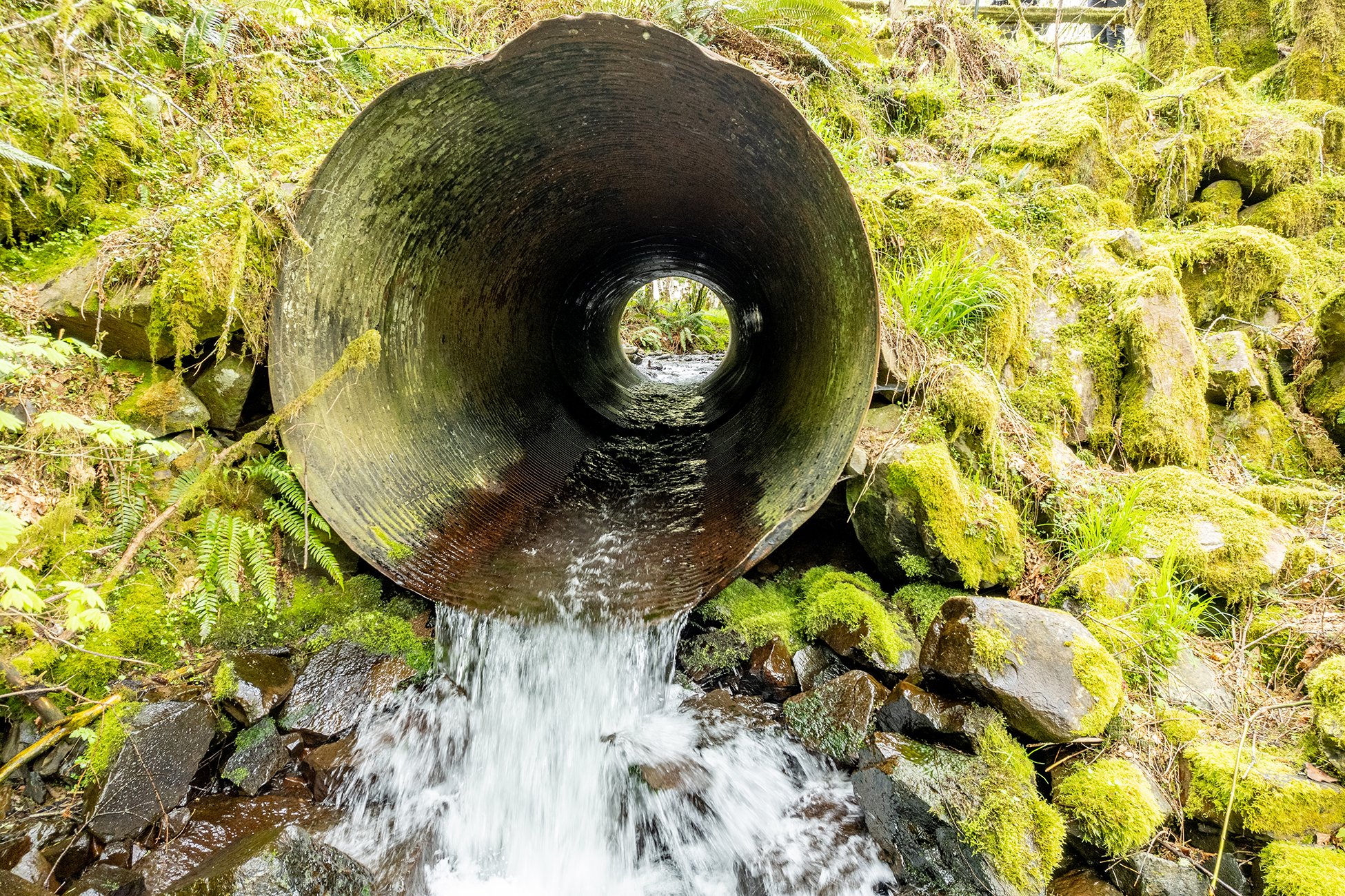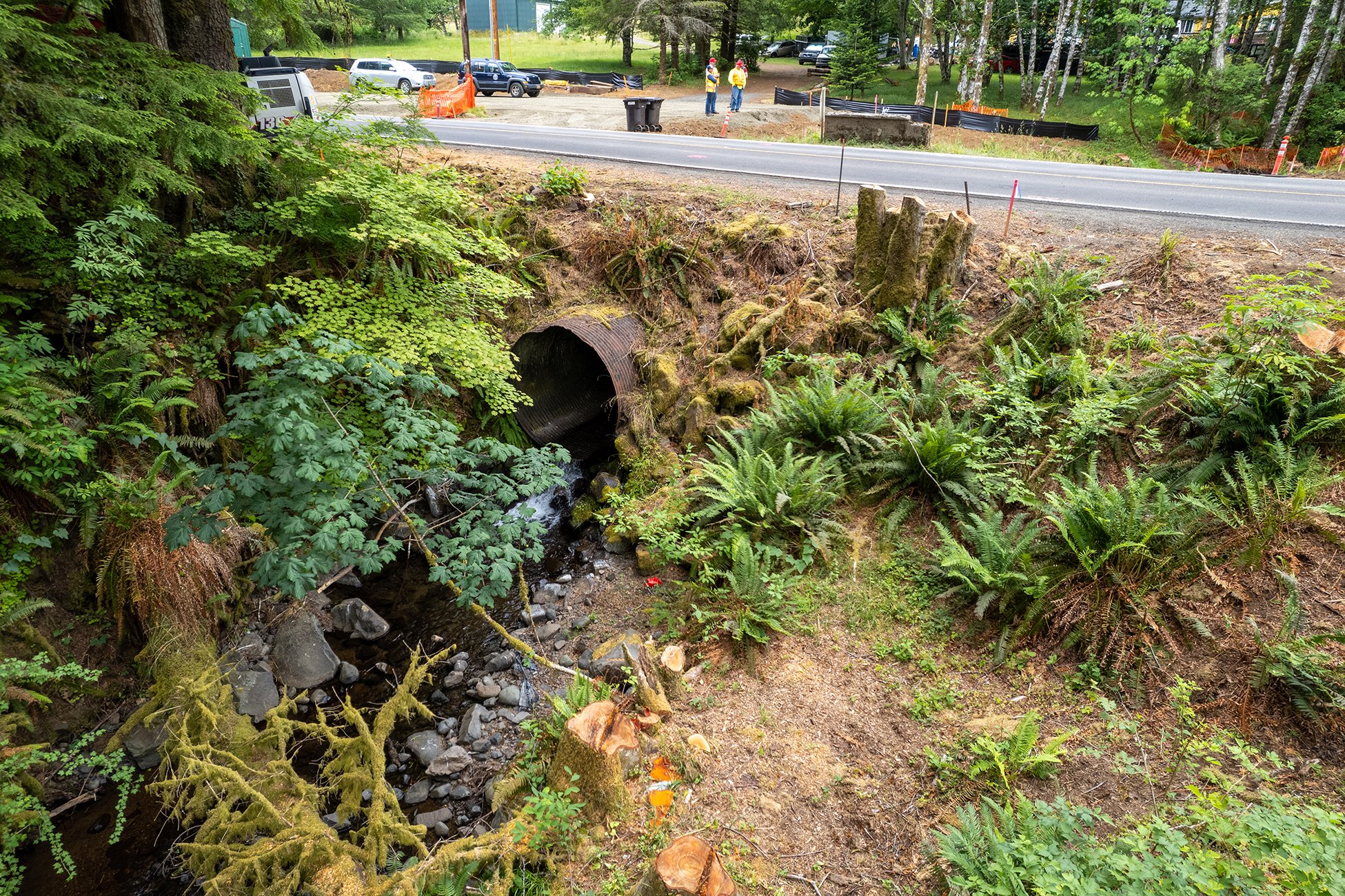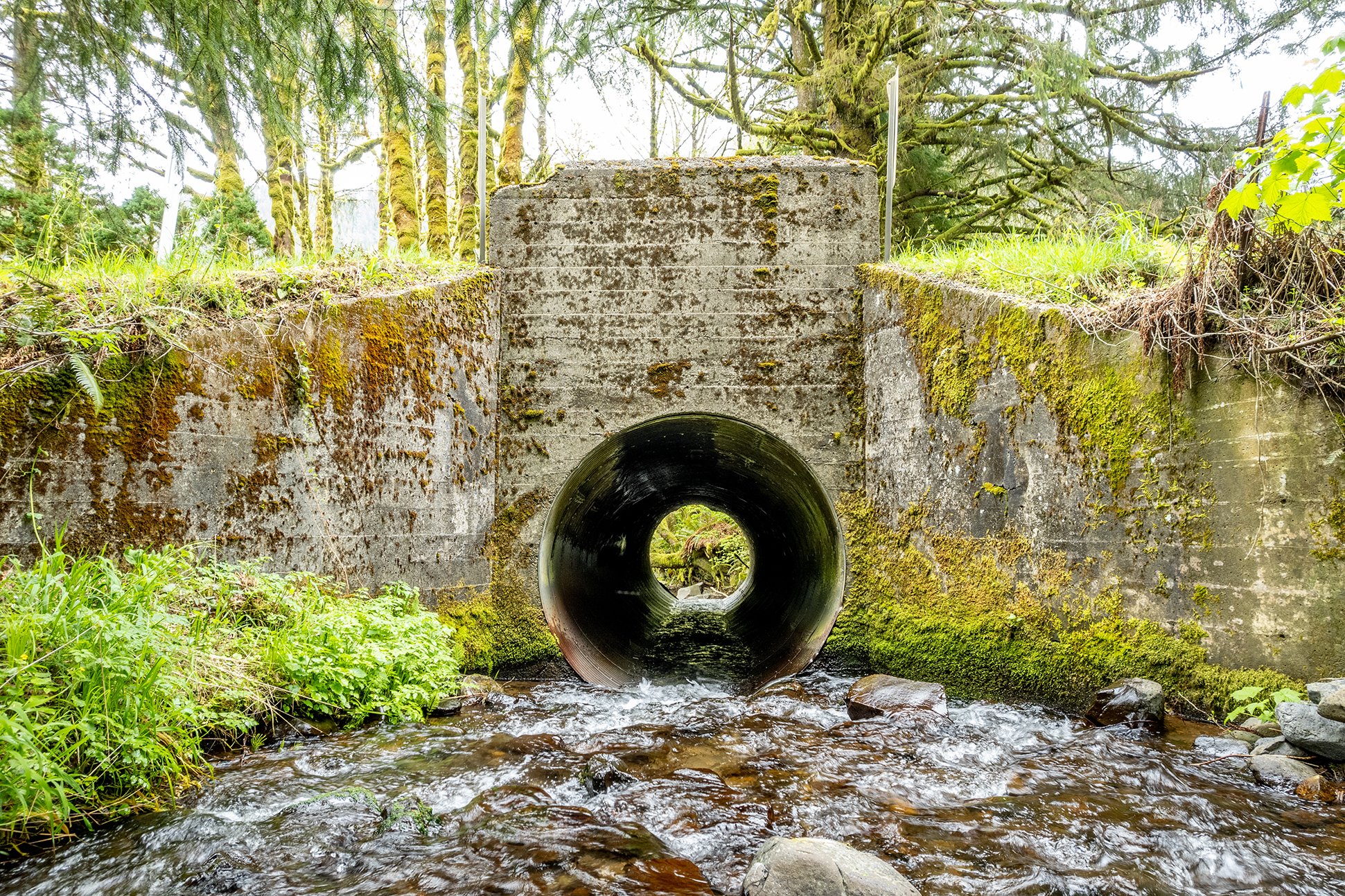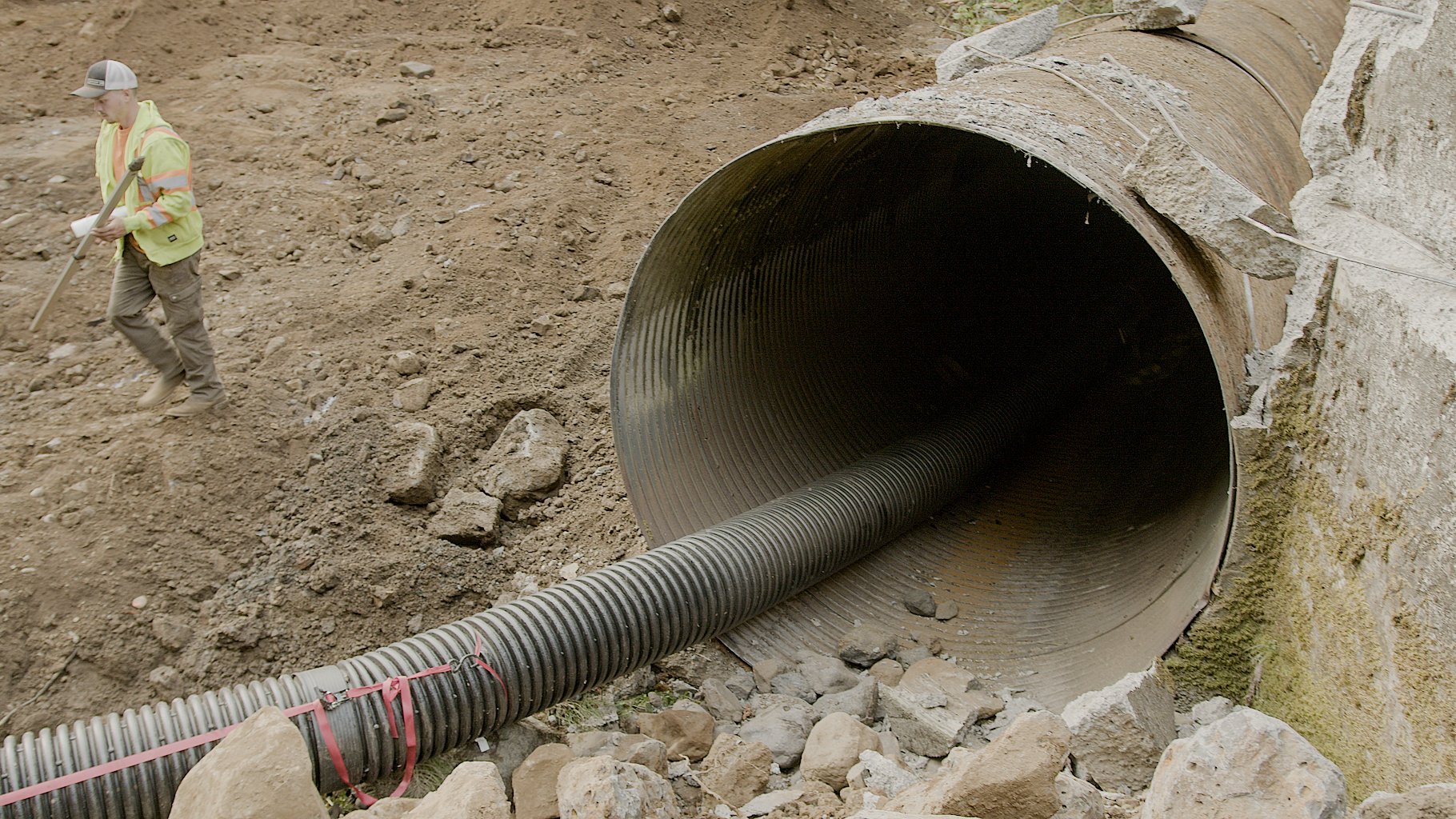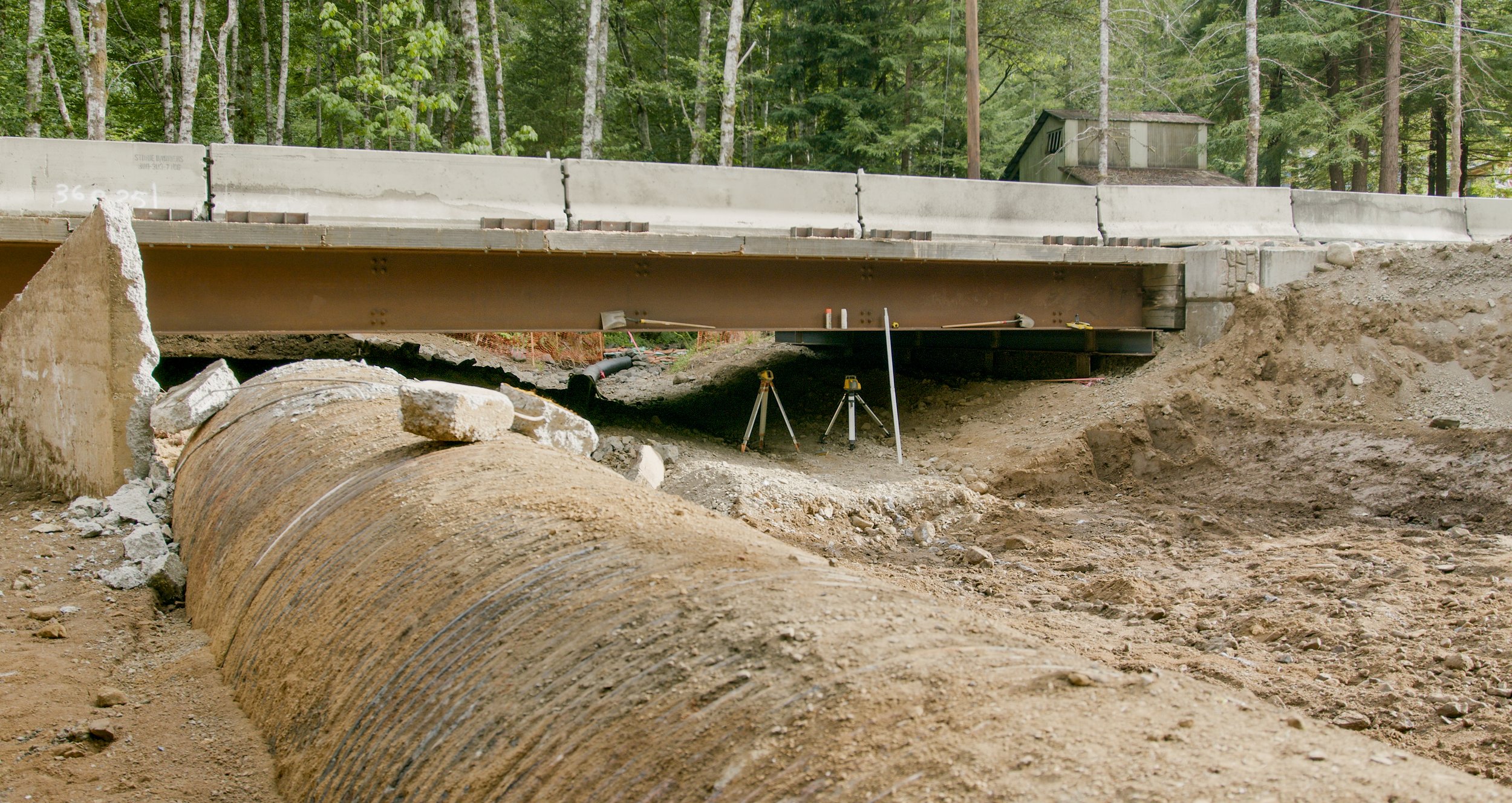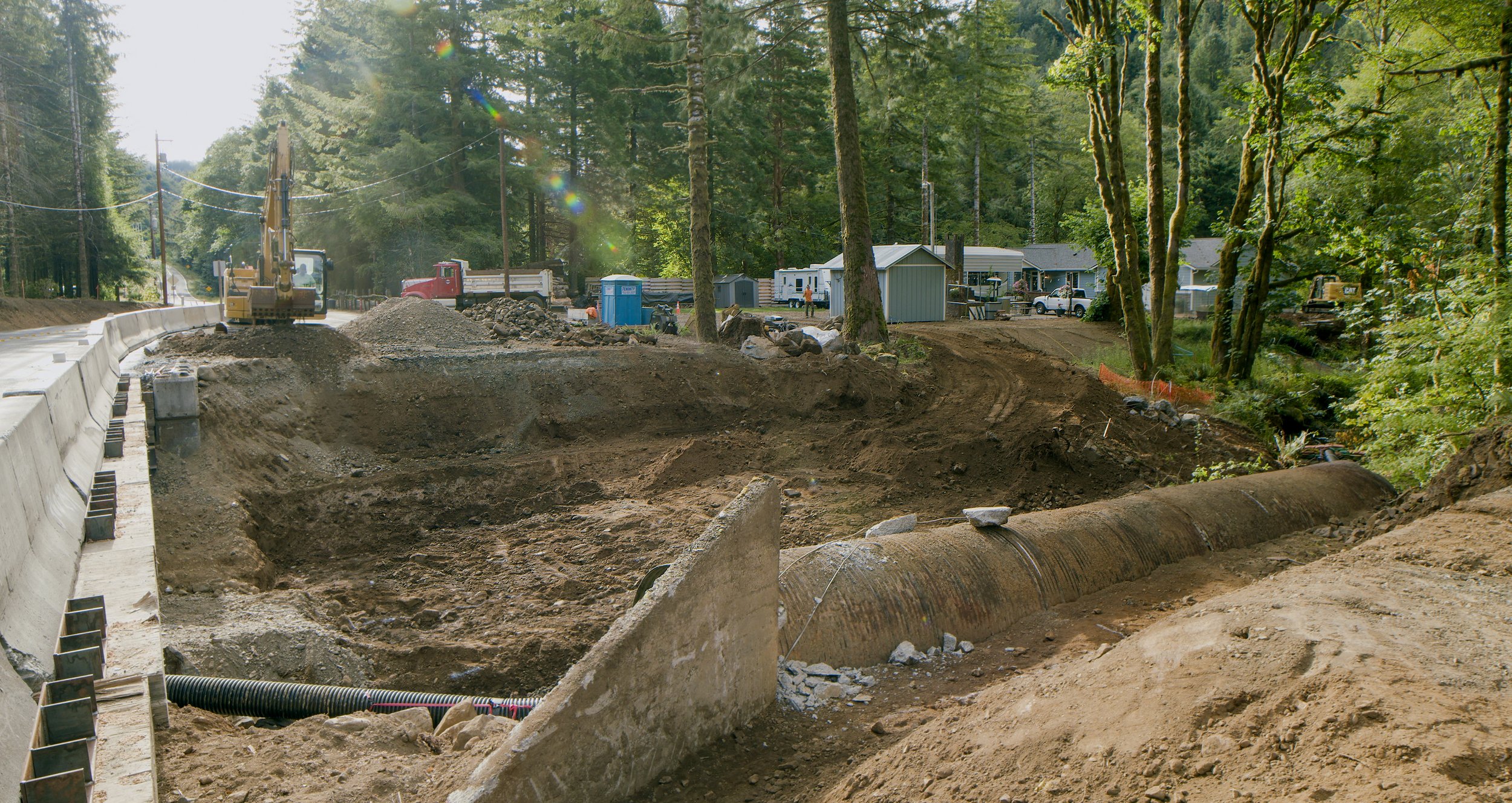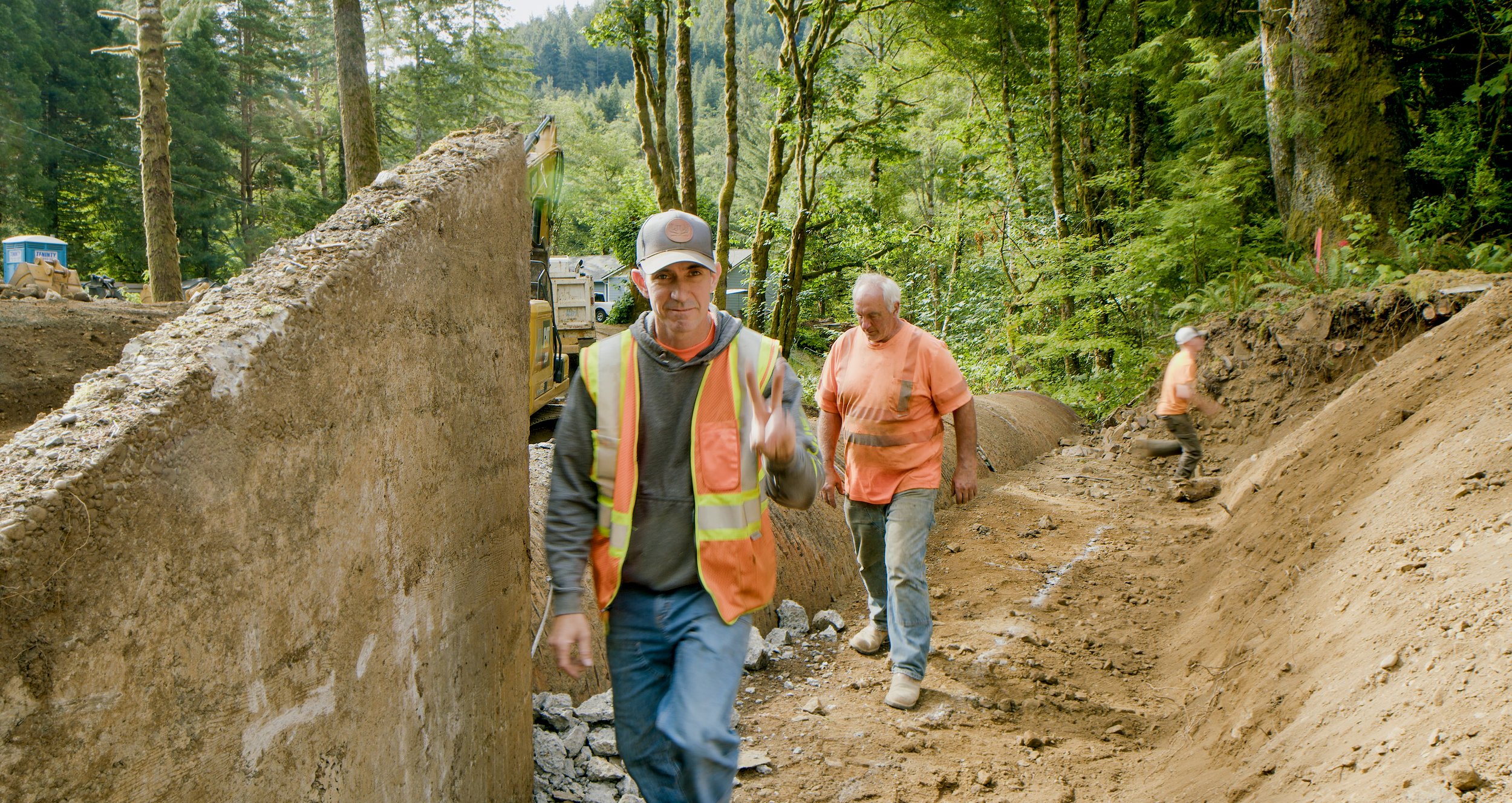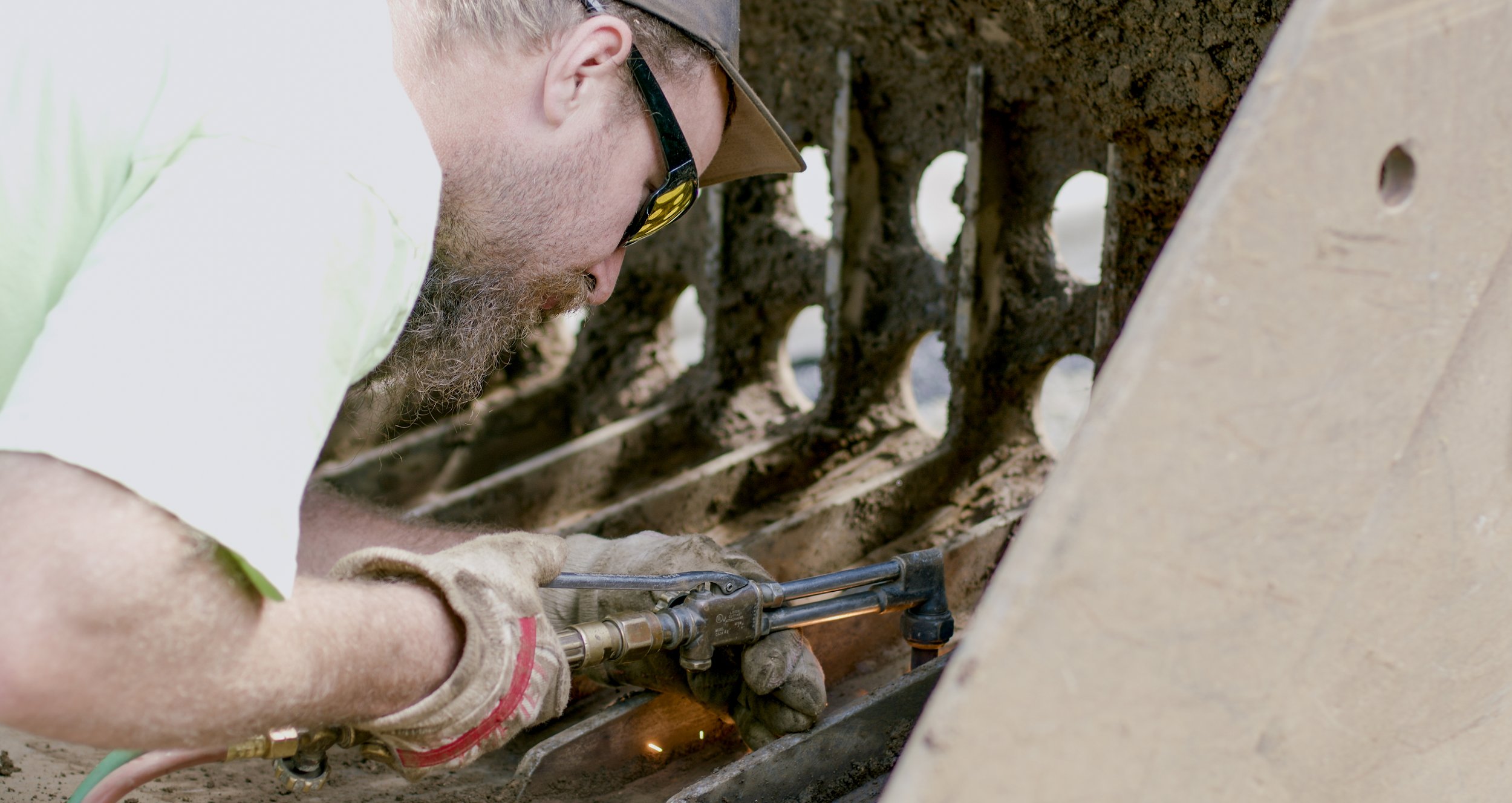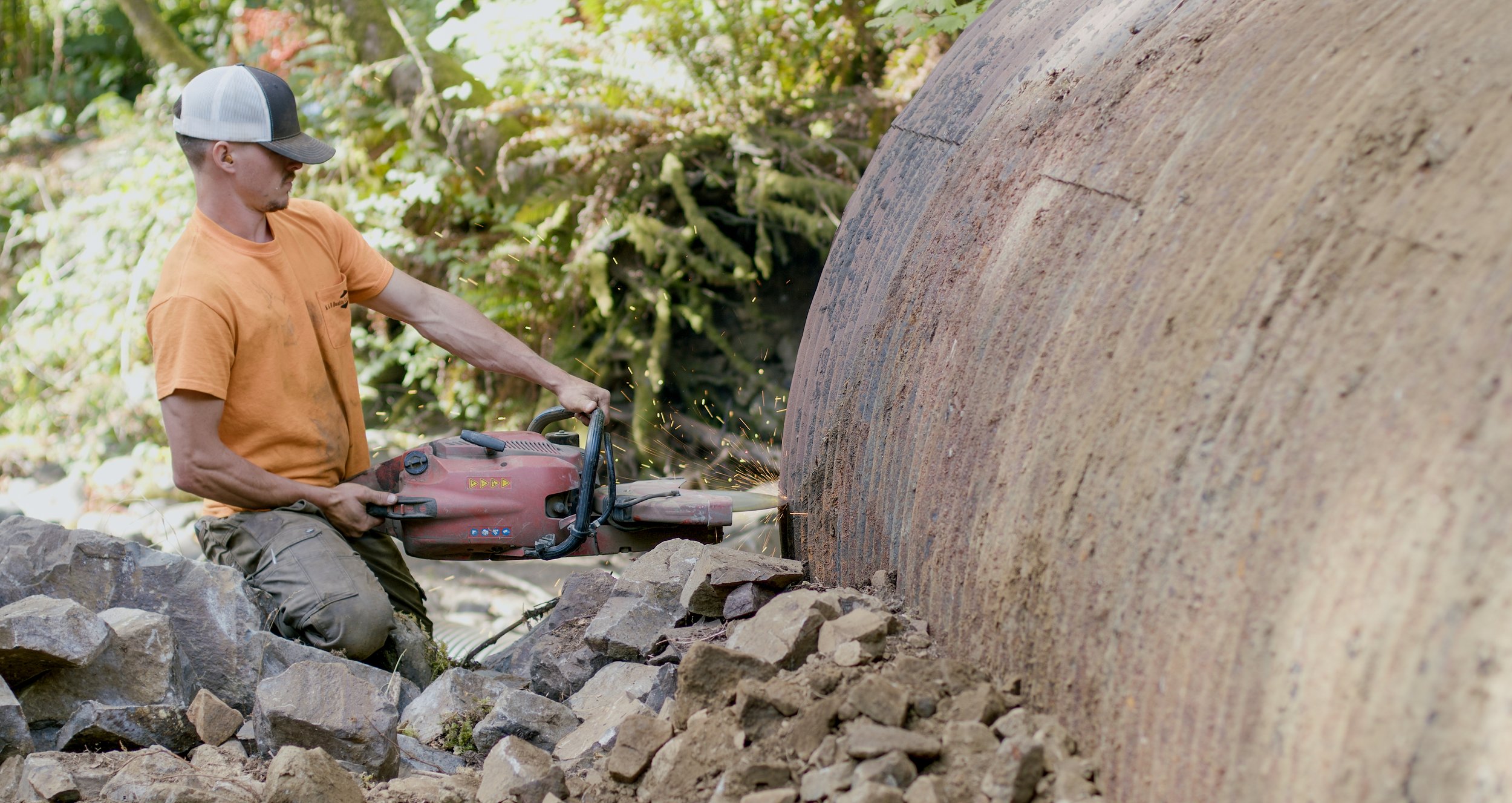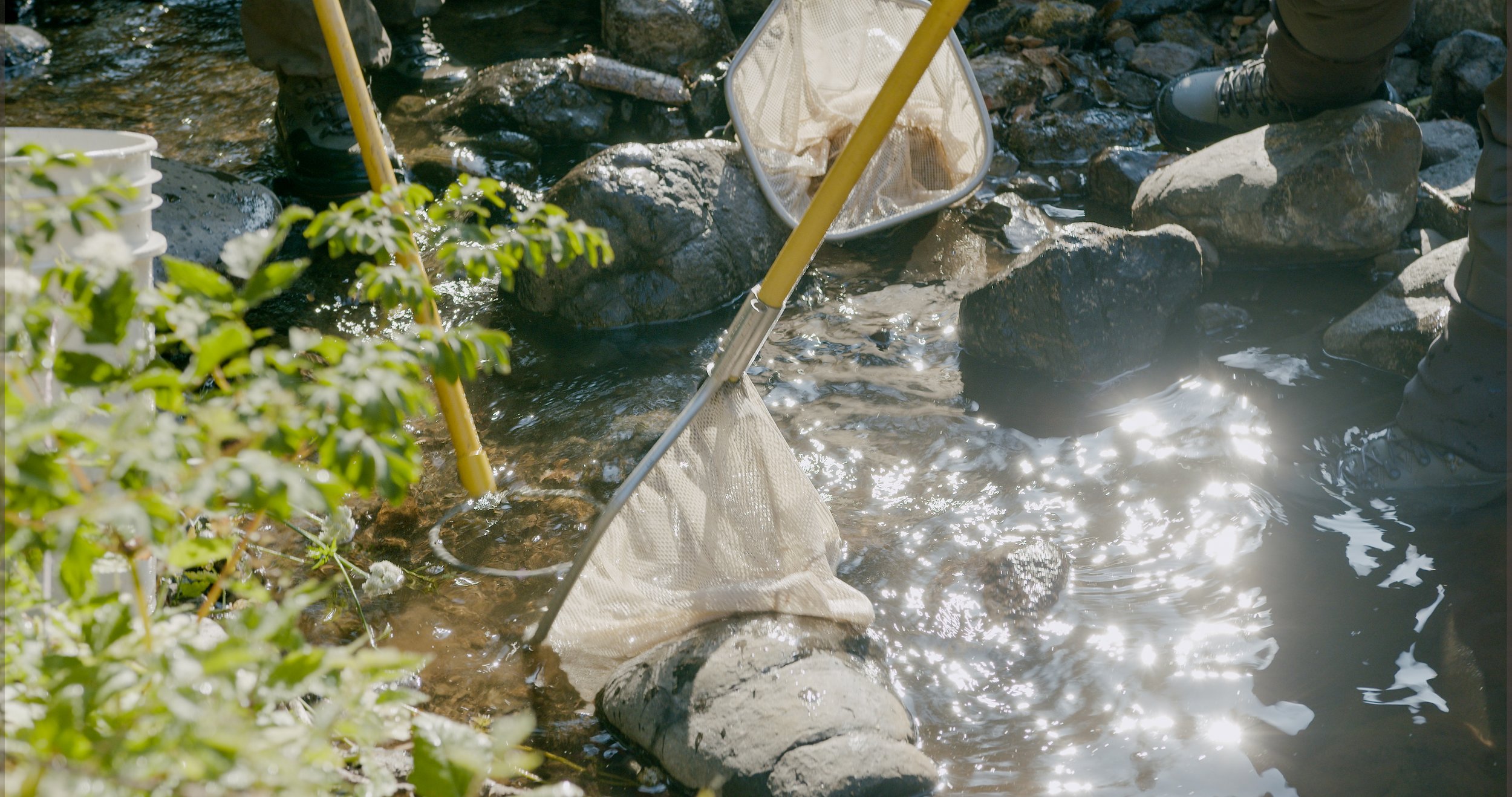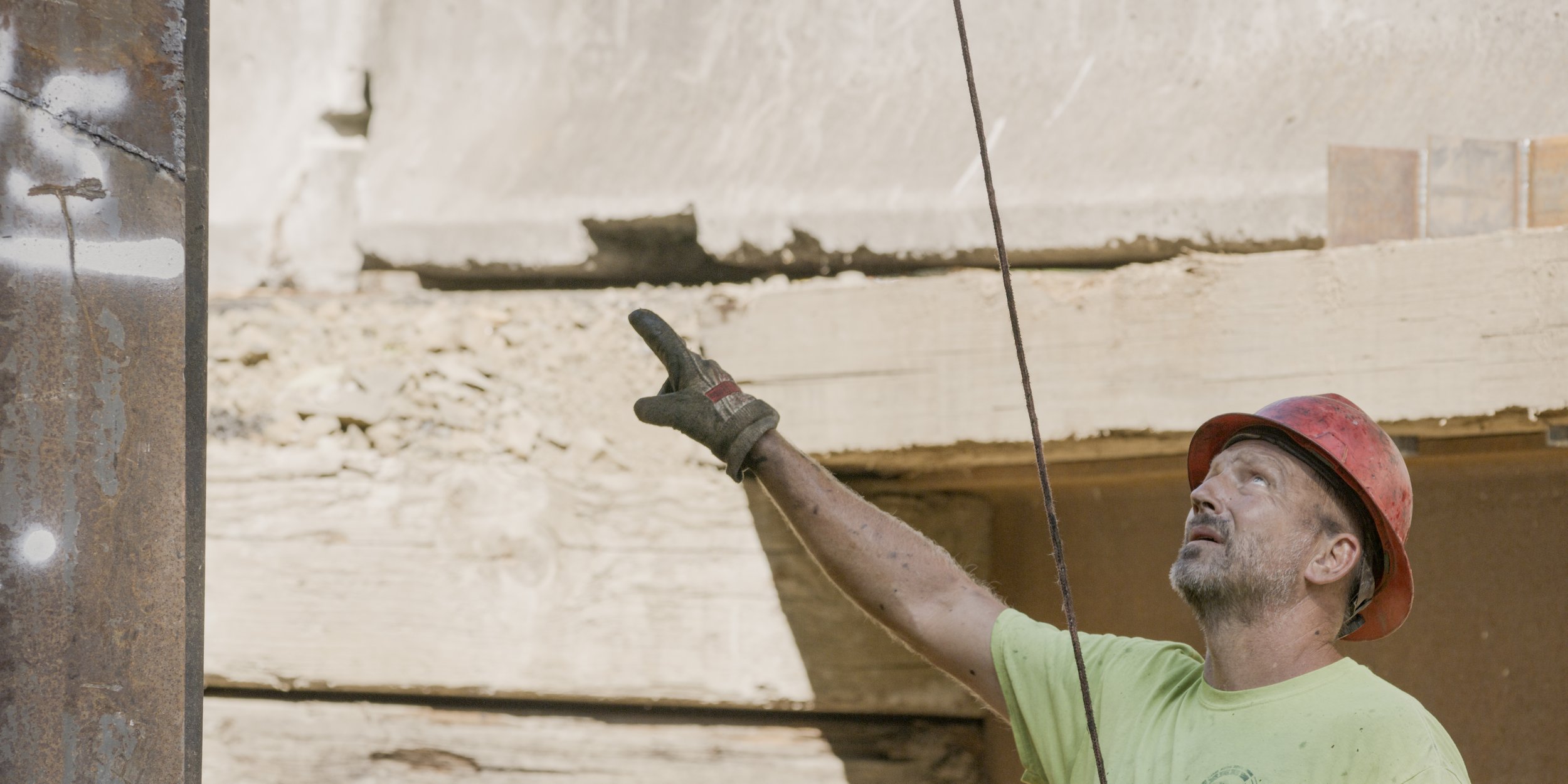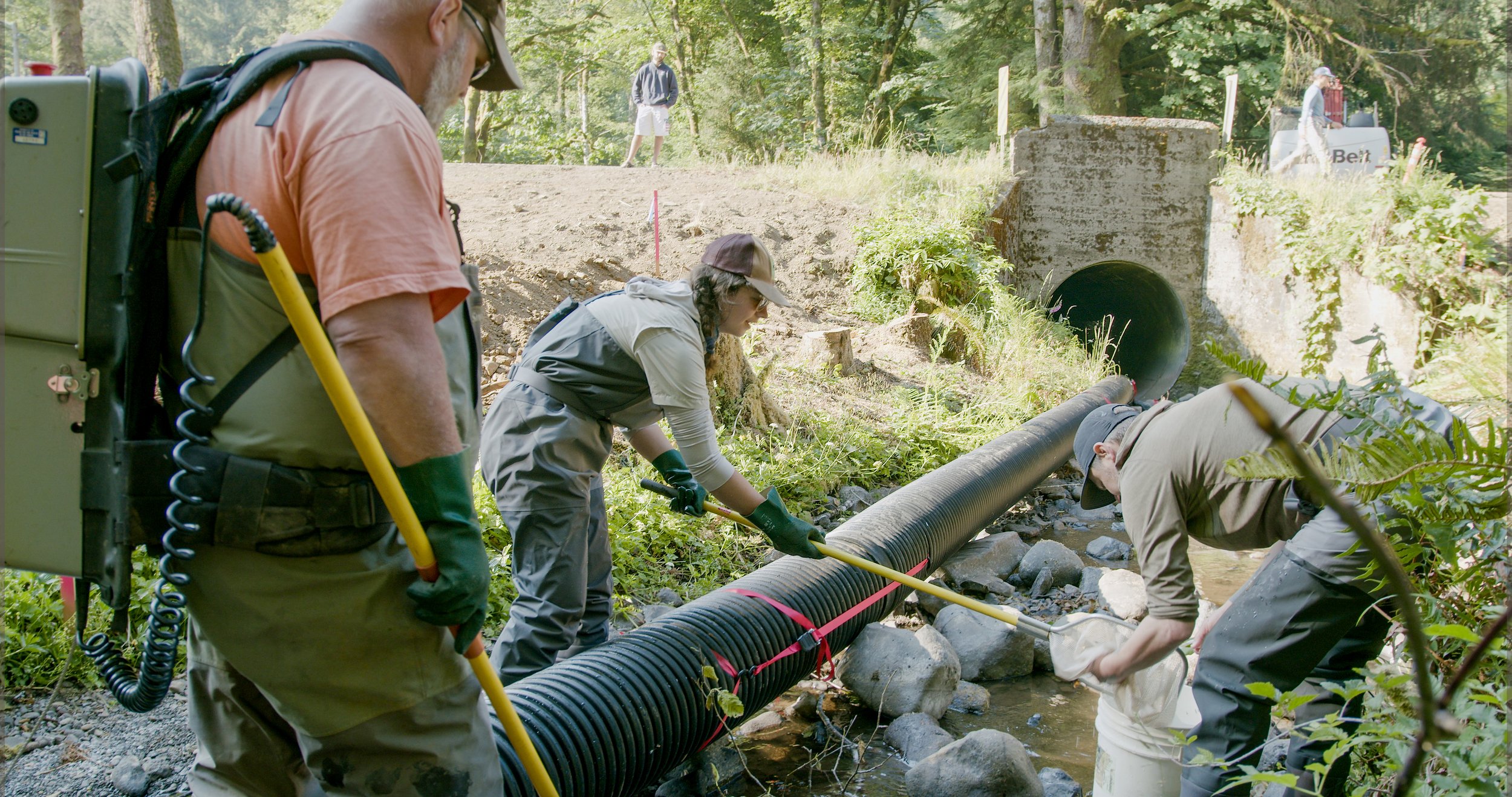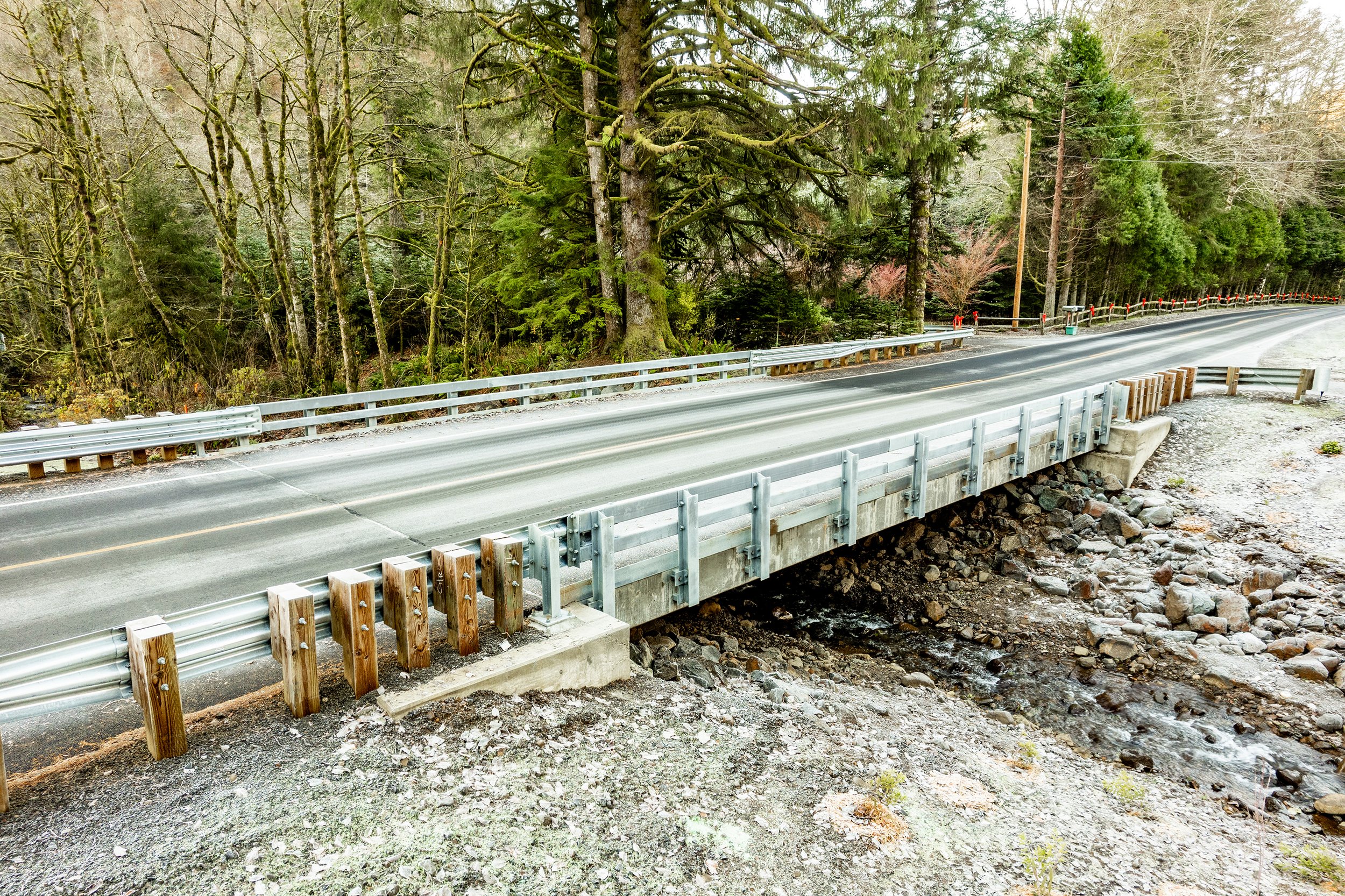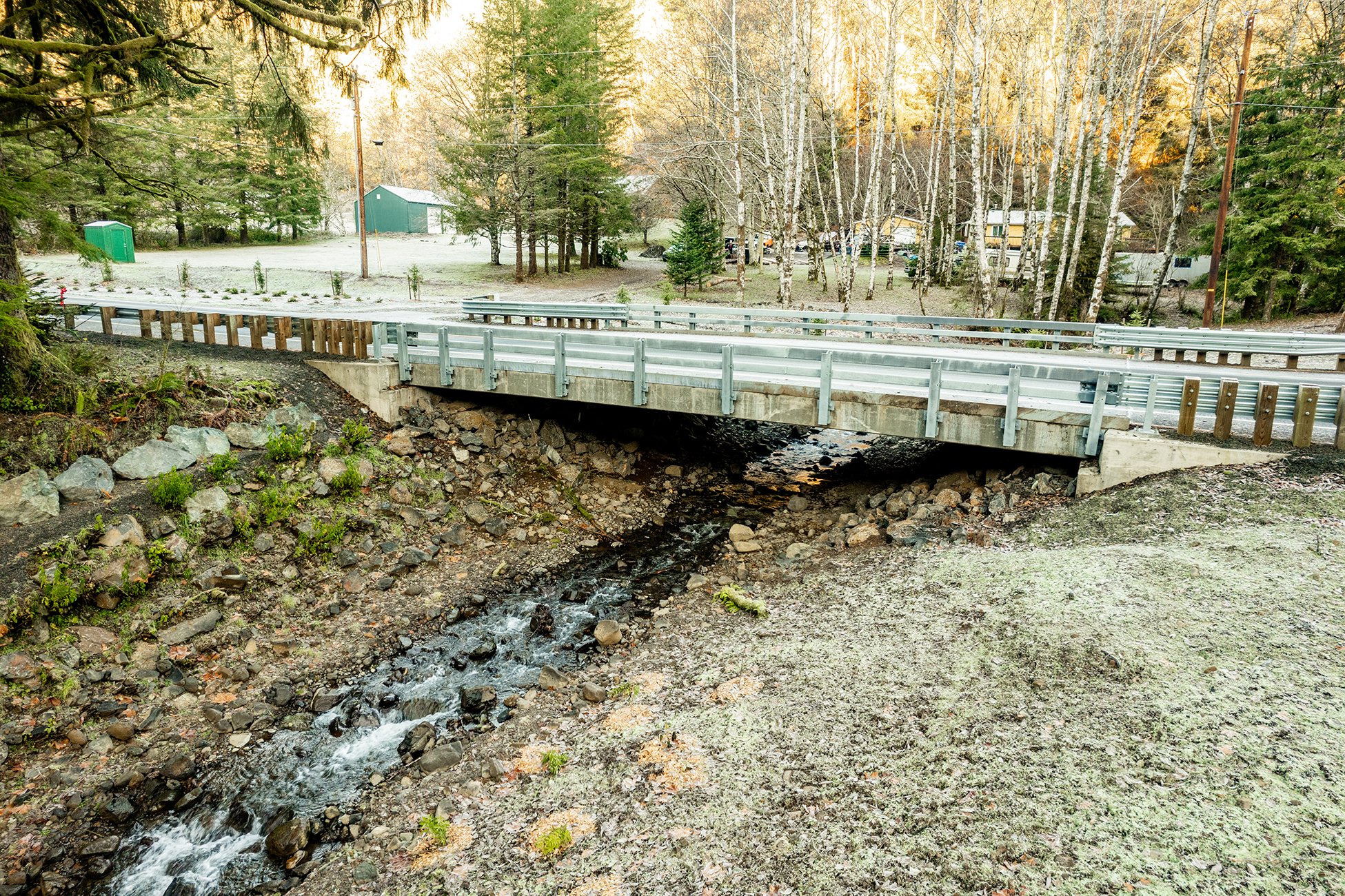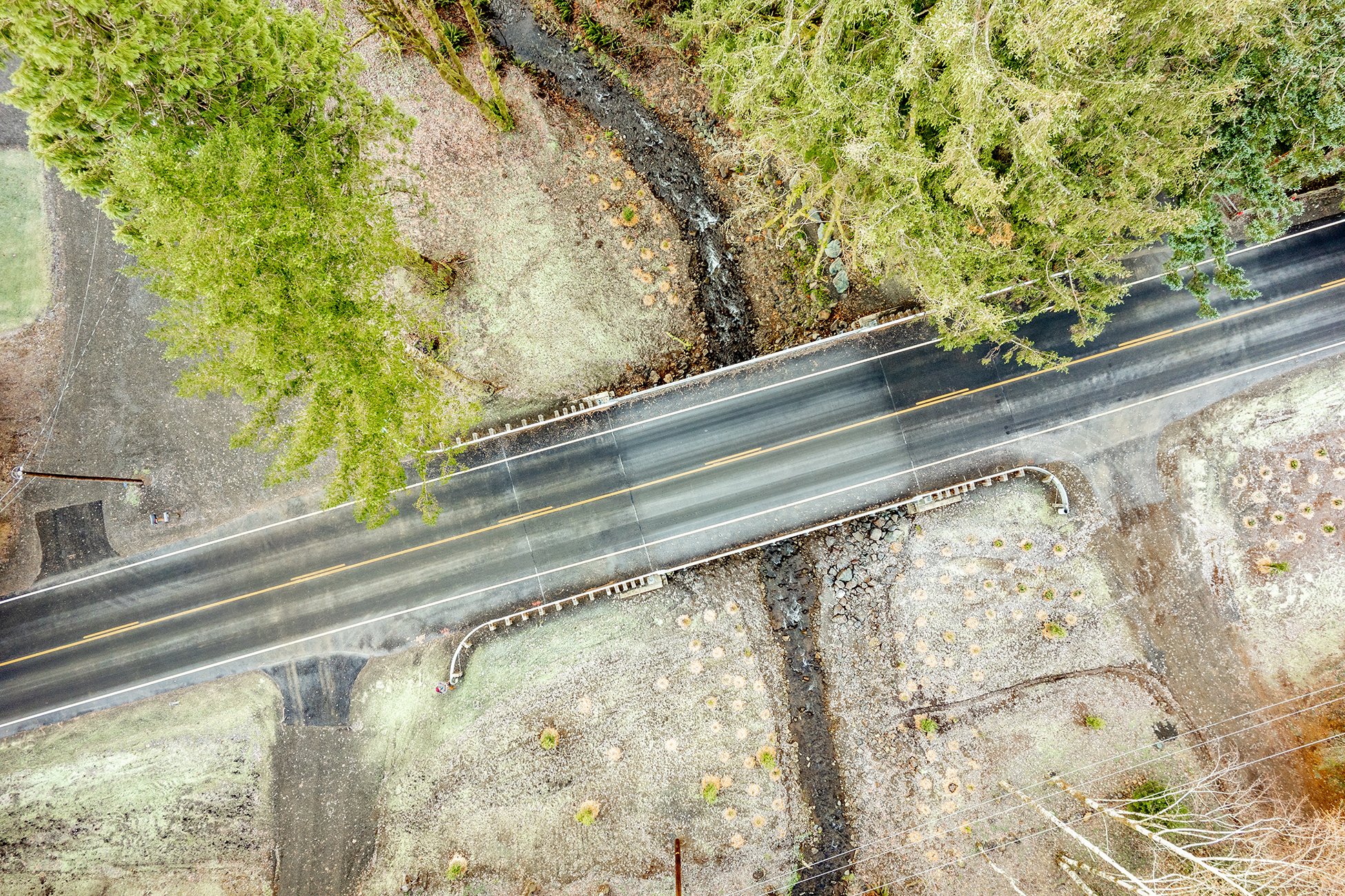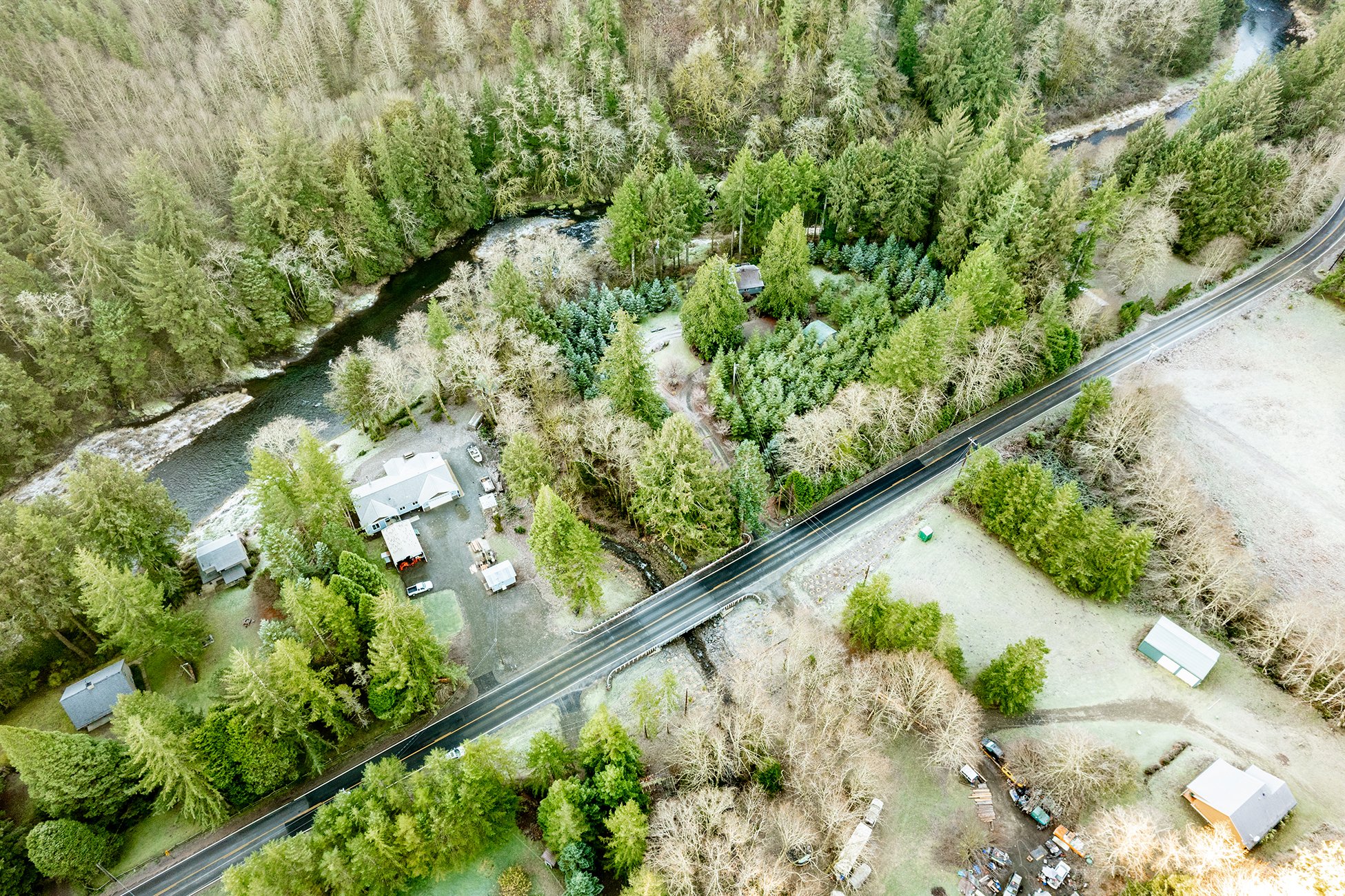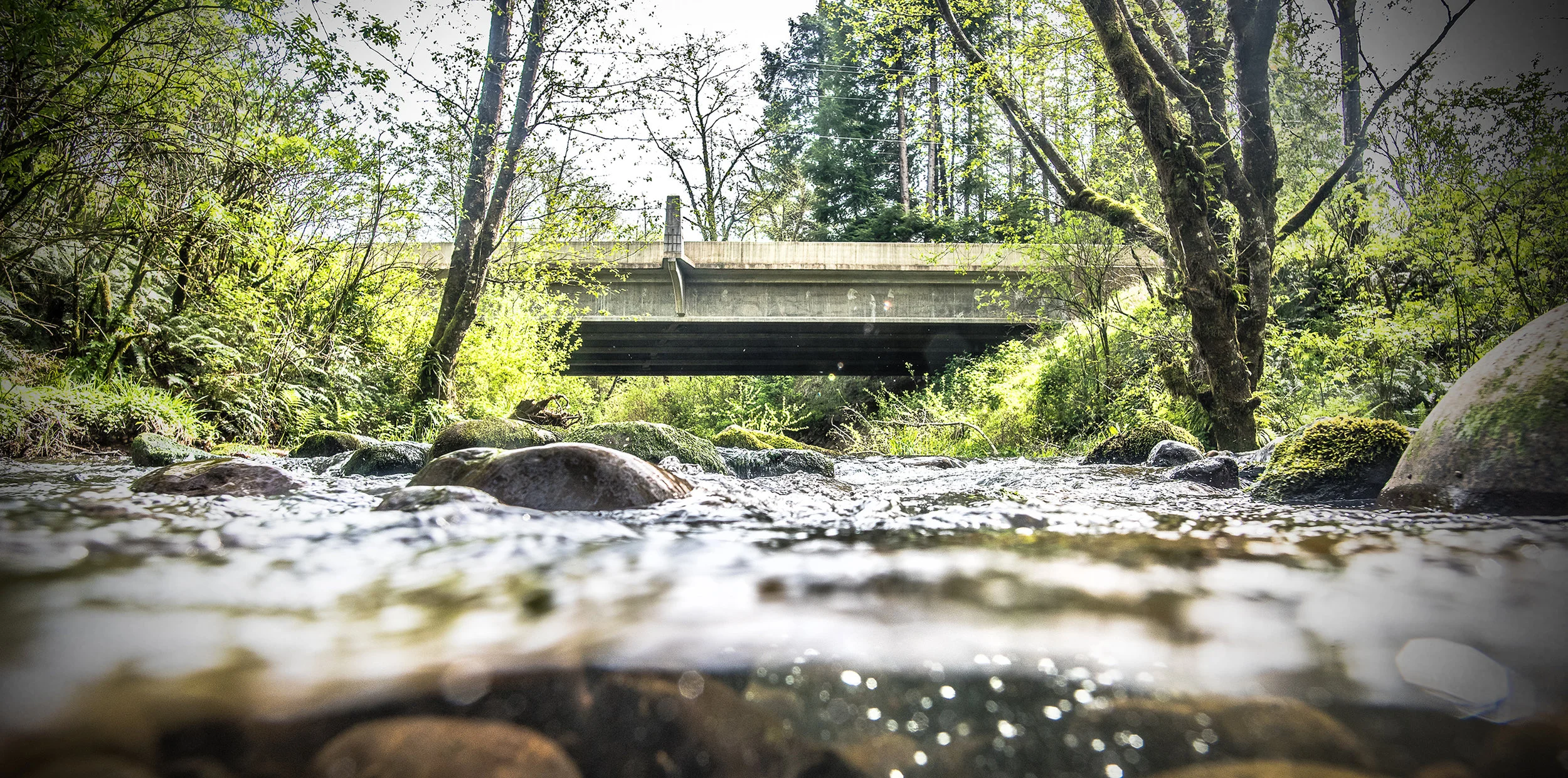Samson Creek highlights
“We were excited to observe coho fry distributed throughout the project site within days of project completion.”
Project oVerview
Started: 5/23 Completed: 10/23 Project Lead: Tu + TCPW
This project replaced an 84” rusted corrugated metal pipe with a 46’ clear span bridge, meeting fish passage requirements. The 1942 Bridge Inventory listed this crossing as a 15‐ft timber bridge.
The undersized culvert was removed and replaced with a 46' clear span bridge, restoring 1.3 miles of upstream spawning and rearing habitat. The streambed was reconstructed using streambed simulation methodology. This technique emulates the stream’s natural bedform, including gravels and boulders, to create optimal fish habitat and passage. We also removed an old concrete structure at the inlet of the culvert.
Trask River Road is the sole access to this area and a failure at this culvert would have cut off access to numerous residences, state and industrial timber land, and recreational opportunities such as parks, camping, fishing and hunting. Replacing this culvert eliminated a public safety hazard and reduced maintenance costs for the County.
Highly successful Partnership
The Samson Creek project was successfully implemented with the collaboration of Salmon SuperHwy partners. Federal and state agencies along with willing private landowners combined technical skills and funding to reopen this important local road and reconnect high quality spawning and rearing habitat for Oregon’s anadromous fish.
Trout Unlimited worked closely with Tillamook County Public Works Department, Oregon Department of Fish and Wildlife, and US Fish and Wildlife Service, US Forest Service, Oregon Watershed Enhancement Board, National Oceanic and Atmospheric Administration
Species + Infrastructure
The old culvert was a full barrier to juveniles and a partial barrier to adults, depending on flows. Anadromous salmonid fish species occurring in the Trask Watershed include spring and fall Chinook Salmon, Coho Salmon, summer and winter Steelhead, and sea-run Cutthroat Trout. Resident Cutthroat Trout also occupy most of the streams. Resident Brook and/or Pacific Lamprey likely occur in the watershed but are not well-documented. The Oregon Department of Environmental Quality rates the lower Trask River as temperature impaired for rearing, migration, and spawning criteria.
Because Samson Creek is a tributary that enters the lower Trask River it offers essential cold water refugia for all fish in the Trask River during high summer water temperatures. Historic construction of the Samson Creek crossing included a concrete headwall at the intel. The concrete wall having been cast around the old steel culvert obscured structural failure at the inlet. This was in addition to structural failures of the pipe through the remainder of the crossing. Prior to the now completed restoration project, considering this combination of failure mechanisms, the crossing was set up for unpredictable catastrophic failure.
Benefits
Trask River Road (single road access to area)
• Improved public health and safety
• Maintains emergency responder access
• Maintains wildland fire access
• Maintains business access
• Removes a flood risk
Samson Creek (high quality habitat)
• Unimpeded passage for fish and access to
spawning and rearing habitat
• Natural stream processes restored
• 1.3 miles of habitat reconnected
cost + funding
TOTAL PROJECT COST: $ 1,500,000 + $28,000 in kind
USFWS: $127,K+ $10K in kind technical assistance + federal compliance
USFS: $127,000
TCPW: $30,000 + $18k in kind, technical assistance & oversite
OWEB: $491,000
ODFW: $131,000
NOAA: $594,000
Partners
Trout Unlimited, Tillamook County Public Works Department, Oregon Department of Fish and Wildlife, and US Fish and Wildlife Service, US Forest Service, Oregon Watershed Enhancement Board, National Oceanic and Atmospheric Administration
Contractors
Farline Bridge Construction, Inc.
